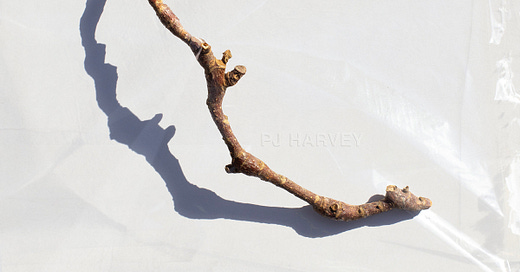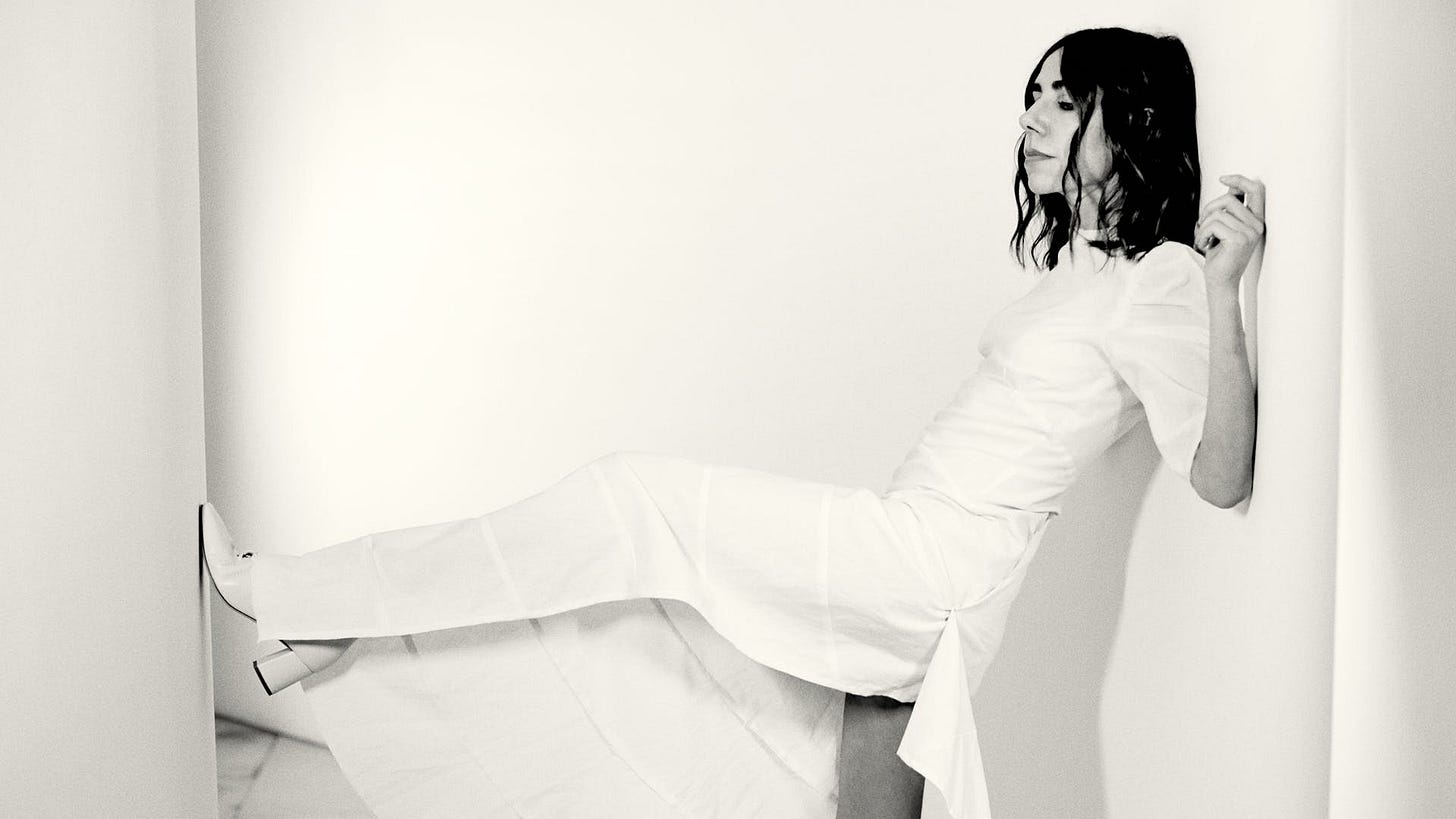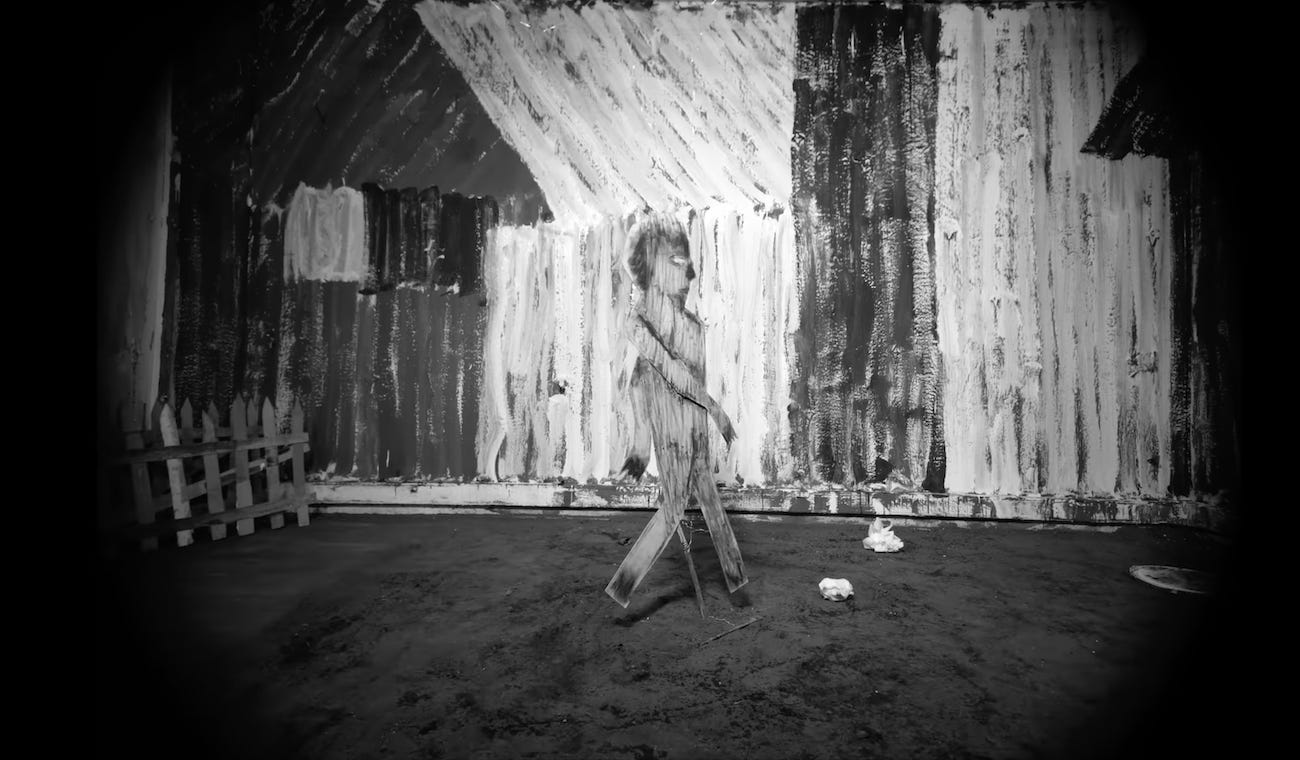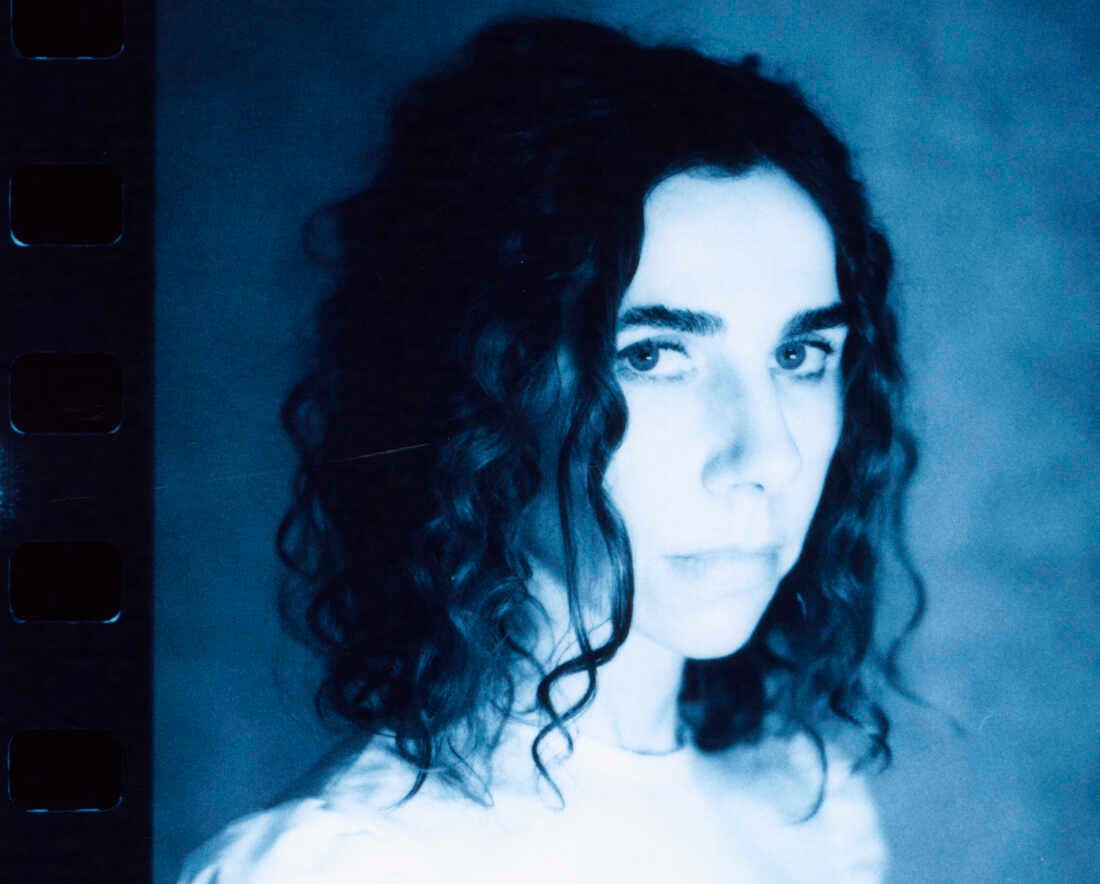When PJ Harvey came off tour in 2017, she thought she might quit music entirely. She had been touring in support of The Hope Six Demolition Project, her previous album, and had found the whole experience exhausting. It’s been seven years since that album was released, and in in the interim Harvey has scored plays and TV shows, and released a book of poetry titled Orlam - a novel in verse form. Harvey worked on the book for several years, undertaking formal training as a poet with Don Paterson, and her new album, I Inside the Old Year Dying, takes place in the same world as the book. It’s an ethereal, odd record, which follows a young girl as she navigates childhood and learns about relationships, nature, and the cycle of life and death.
Harvey has always been into the seamier side of things. Since she emerged onto the music scene in 1992 with her debut album Dry, she has largely focused on the darker side of human nature. Dry and its follow-up Rid of Me were recorded as the PJ Harvey Trio, a band consisting of Harvey, drummer Rob Ellis, and bassist Steve Vaughan. They were a ferocious group, and Ellis and Vaughan gave the perfect backing to Harvey’s tales of scorned love, suffering, and revenge. After Rid of Me the trio dissolved, and Harvey went solo with To Bring You My Love. On this album, she broadened her sonic palette and enlisted now-longtime collaborators John Parish and producer Flood, who have worked on all of her albums since.
Harvey’s career has long been defined by her chameleonic ability to shape-shift her voice and musical style according to whatever project she’s working on. Especially in her early work, each album has its own distinct persona, sound world, and visual presentation. She has never repeated herself, a self-imposed rule. From the experiments in trip-hop and electronica on Is This Desire? to the exuberant, shimmering Stories from the City, Stories from the Sea, to the rough-and-ready Uh Huh Her, Harvey has always aimed to break new ground and challenge herself with each new album. White Chalk marked a shift in approach, as she almost entirely eschewed the guitar, her primary instrument, to learn the piano. The resulting songs are funereal and desolate, and it is probably her saddest album - though it remains in my mind an underrated gem in her discography.
After that she changed gears again, turning her attention to war and conflict. By this time Harvey felt she had acquired the ability as a lyricist to handle the kind of language needed for such serious subject matter. Let England Shake interrogates the effects of war - primarily events from World War I - on people’s lives, and Harvey underwent an extensive period of research to write the album, interviewing soldiers and examining historical documents. The heavy lyrical content is contrasted with music which is rousing, uplifting, and deeply moving. The album is frequently referred to as her best, and earned her a Mercury Prize for the second time.1 That was followed by The Hope Six Demolition Project, in which she took a similar approach, widening her scope to look at conflicts in Kosovo, Afghanistan, and Washington D.C. Compared to its predecessor, the album is harsher in sound and more confrontational in its discussion of political issues such as poverty and displacement.
And now Harvey has returned to the songwriter stage with I Inside the Old Year Dying, her tenth album, and it’s something entirely new which we haven’t heard from her before. The album takes twelve poems from Orlam and sets them to music. It’s an absorbing, beguiling listen, and Harvey’s voice is as nimble and agile as ever. Aided by Parish and Flood, she aimed to create a “sonic netherworld” to reflect the mysterious, liminal setting of the text. This is mostly achieved through the prominent use of electronics, which provide ghostly backdrops to many of the tracks, along with the usual line-up of guitars, piano, and drums. Field recordings of church bells, birds, and other animals are also mixed in.
The world of Orlam and I Inside the Old Year Dying is deeply rooted in nature, though it also has one foot in another realm. Central to the album is the permeable line between the physical and the spiritual, the living and the dead, between reality and fantasy. The lyrics have a deep undercurrent of folklore, the connection to England’s pagan past, but also incorporate Christian themes, such that the world Harvey creates seems to exist outside of time somehow, both ancient and modern, of every era and of no era all at once.
In addition to the central character and a supporting cast of trees and animals, there is also the recurring figure of Wyman-Elvis, a cross between Jesus and Elvis Presley, who acts as a spirit guide for the young girl. Harvey’s vision of childhood here is charming but not nostalgic, and doesn’t shy away from its dark side; neither does it shy away from sexuality and the passage between innocence and experience.
Opening track “Prayer at the Gate” sets the tone wonderfully, and features one of the most striking vocal performances on the album. “Lwonesome Tonight” quotes Elvis directly with the phrase “Love Me Tender”, which is repeated several more times throughout the album, and references the song “Are You Lonesome Tonight” at the end. The title track is a standout, one of the more raucous moments on the album, and probably the most recognisable ‘classic PJ Harvey’ song here. “A Child’s Question, August” sees the protagonist looking to the birds for answers amidst existential questioning brought on by the end of summer. But the highlight of the album for me is “I Inside the Old I Dying”, a haunting, delicate song full of longing.
In order to write Orlam, Harvey studied the all-but-forgotten dialect of her native Dorset, a county in the south-west of England. The book displays each poem in standard English with its translation into the Dorset dialect on the opposite page. This further anchors the text in a sense of place, and situates it within a historical context and a literary tradition. Orlam is the first book to be published in the Dorset dialect for decades. Various Dorset phrases crop up throughout the album, such as “unray I for en” - phrases which read like elegant, cryptic riddles, adding to the sense of mystery and other-worldliness the album evokes. Other translations include: “writing” becomes “scratching”, “scrap” becomes “scrid”, and “moss” becomes “meesh”.
Given that the lyrics are plucked from a larger collection and are missing context, it gives the album as a whole a somewhat disjointed quality which leaves something to be desired, and the lyrical motifs can become repetitive at times. It’s not the most cohesive album Harvey has made, but perhaps this captures the fractured experience of the protagonist more effectively than a more conventional album would. In any case, it’s great to have a new PJ Harvey album to listen to, and it serves very well as a companion piece to the book.
Sources:
The Guardian - ‘Am I still any good? Have I still got it?’: PJ Harvey on doubt, desire and deepest, darkest Dorset
NPR - 'Life and death is such a fine line': PJ Harvey on creating in a place between worlds
Rolling Stone - ‘It Doesn’t Feel Dark to Me’: PJ Harvey on Her Surreal New Novel, Growing Older, and the Beauty of Ugliness
Harvey won the Mercury the first time just ten years earlier, for Stories from the City, Stories from the Sea. She is the only artist to have won the prize twice.







